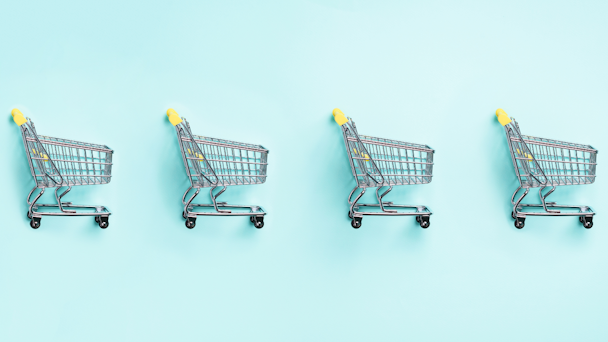4 big trends mixing up commerce in 2024
VML’s Charlie Wade presents four stand-out retail trends he’ll be mindful of in 2024.

This year, retail and commerce will need to find ever more impactful ways of meaningfully connecting with consumers. Yet, while myriad column inches will be dedicated to AI [editor’s note: more than myriad], that is just part of the story. Indeed, other areas have been building momentum and will continue to do so throughout 2024 and beyond.
Social commerce in transition
This year will be one of evolution for social commerce. From a platform perspective, TikTok continues to be the most ambitious, redoubling efforts to roll out ‘Shops,’ its in-app eCommerce offering (whereby all transactions occur in the app itself). Parent company ByteDance, is also pushing its ‘Fulfilled By TikTik’ offering, which offers brands the option to outsource fulfillment - including warehouses to store, pick, pack, and ship goods. Already live in markets like the UK and Indonesia – where there are 125 million TikTok users – the US remains the jewel in the crown and will see the platform aggressively hunt brands to join. TikTok’s competitors are still in the game, just to a lesser degree. For example, Meta is focusing on Livestreaming on Instagram. In India, commerce has been integrated into WhatsApp, the messaging app. By partnering with the retailer JioMart, people can shop while they chat. Beyond this, increased sales will come from influencers – a global market that hit $21bn in spend in 2023. Significantly, the role of the influencer will morph from awareness to conversion driver, shifting to an affiliate-style model with influencers earning commission rather than a flat fee. Not everyone loves the change, but it is an approach honed in China and headed West.
Advertisement
Connected content
The pandemic reframed the role of the home in most of our lives. Traditionally a place to dwell, the increased time spent there meant it evolved into a commerce channel. High-speed WIFI-powered shopping via phones and tablets; home delivery of meals and groceries accelerated, as did purchases while gaming. But maybe the most interesting is that of the TV, which increasingly offers connected commerce. An example of this was Amazon’s Black Friday American Football broadcast last November when commerce opportunities were peppered throughout, from ads featuring shoppable QR codes to product drops with prices that unlocked as the show progressed. Around the same time, American grocery store Walmart launched ‘RomCommerce,’ a festive movie entirely shoppable with consumers buying through their connected TV (using Roku). TV stations like QVC and HSN are also getting into livestreaming, which has typically been the preserve of social media channels. Last year, it offered 40 hours of shoppable content daily on Amazon’s Freevee – from cooking to entertainment. It is for a good reason: almost half of all Americans (46%) have bought something from a livestream and intend to do so again.
Buy now, pay later
As consumers everywhere struggled with rising prices and the overall cost of living, the infiltration of Buy Now Pay Later (BNPL) schemes also enjoyed a rise in fortune. Sadly, making ends meet will remain an issue for many people in the coming months, meaning many will turn to BNPL companies such as Klana and Affirm, which allow consumers to spread payments over an allocated period rather than paying full price in one go. BNPL providers initially saw success across fashion retailers, but recently gifting and usage during promotional events like Black Friday have seen increased usage. In fact, in 2023, $940m of the total online spending in the US over Cyber Monday was from BNPL, an increase of 42.5% over the previous year. The most intriguing growth area, however, is grocery. In the first two months of 2023, groceries’ share of spending via BNPL grew by 40% in the US (By comparison, apparel was only up by 8%.) The trend is echoed in European countries, too; for example, BNPL grocery spend in France is expected to be circa $20bn by 2028. The issue comes with high repayment interest rates for those who miss payments, thereby sinking the financially precarious into the perilous. With discretionary spend items like fashion and electronics this felt slightly less concerning; yet as shoppers increasingly use these schemes for necessities, alarm bells should start to ring.
Partnerships
Partnerships continue to drive awareness, acquisition, and sales: For brands looking to generate outsized returns, there are few better levers than collaborations. 2023 saw some great examples, like Heinz x Absolut, Omega x Swatch, Stanley Cup x Starbucks, New Balance x Miu Miu, and countless others. 2024 will see more partnerships, albeit with a strong emphasis on what is in it for the audience. As buyers become increasingly savvy to collaborations, it will become vital for brands to be considered and choiceful about why the partnership exists and what the value exchange is for the consumer. There are fewer better methods than partnerships to drive attention within a crowded marketplace, so brands are all pushing hard into the space. But they must be distinctive and rewarding for all parties.

